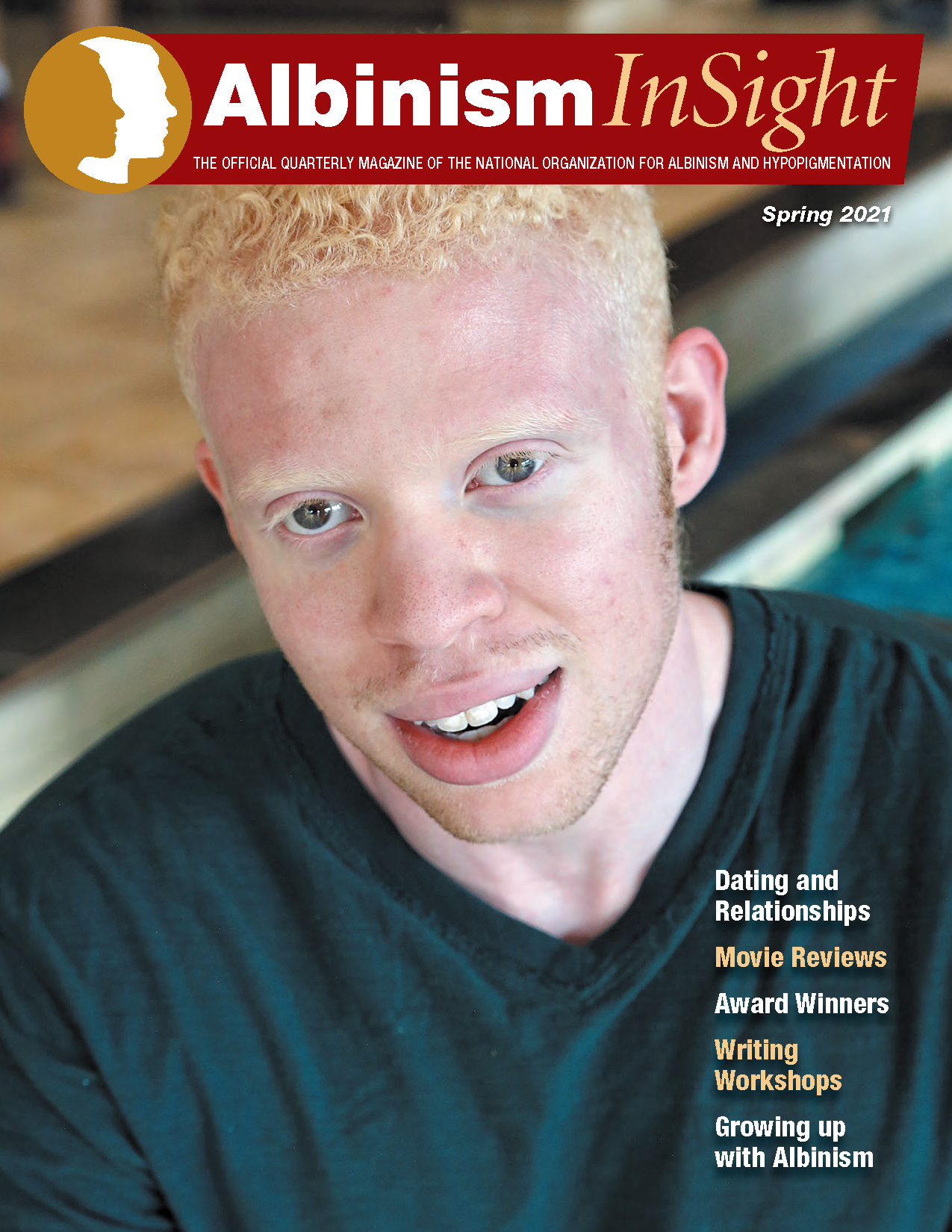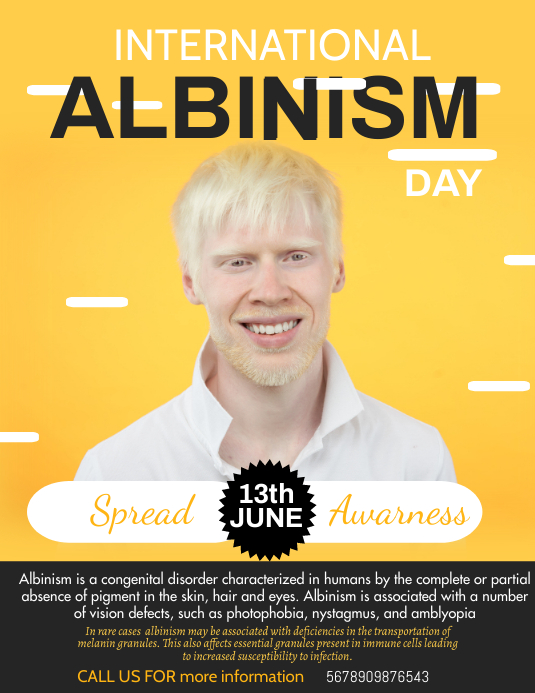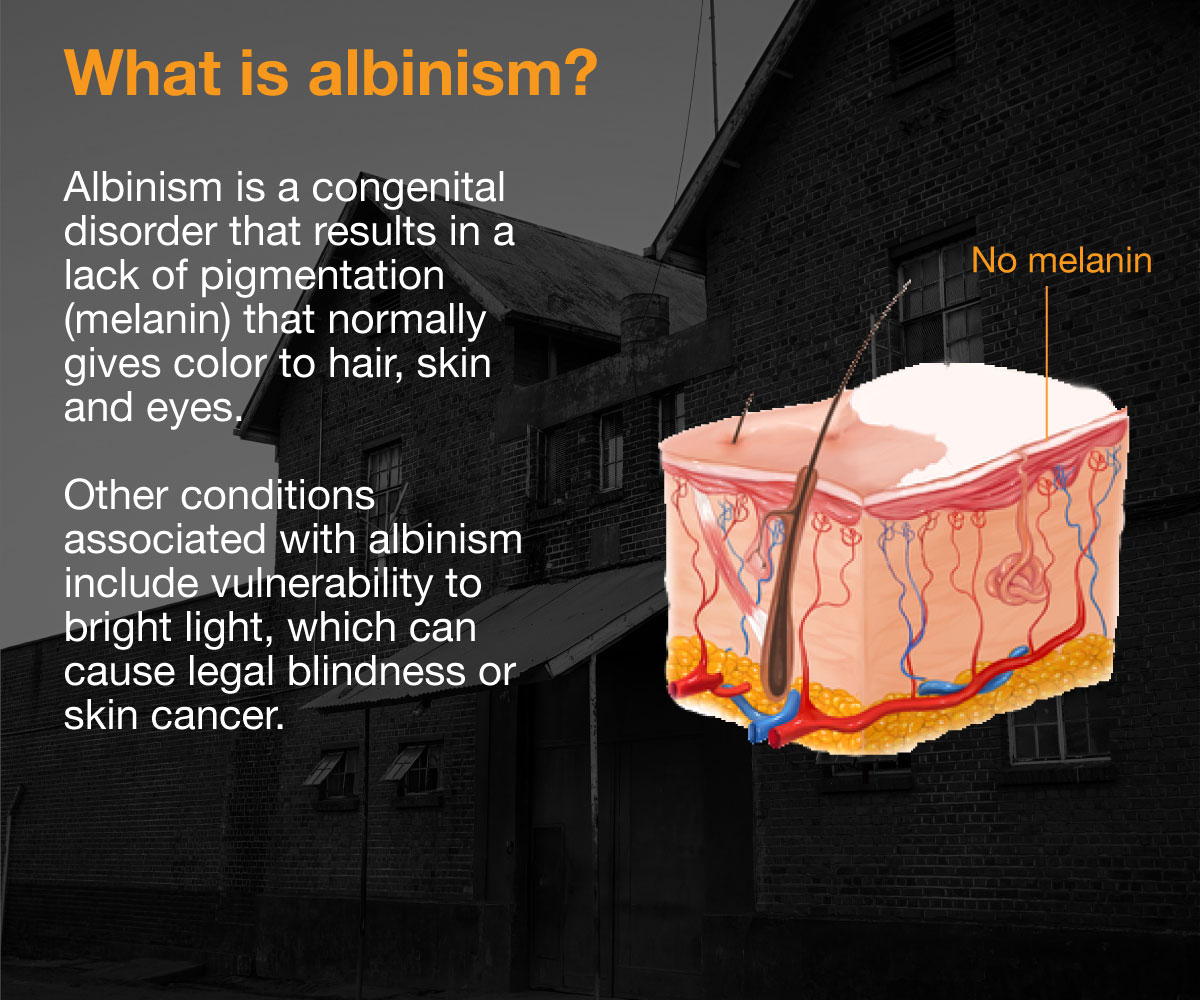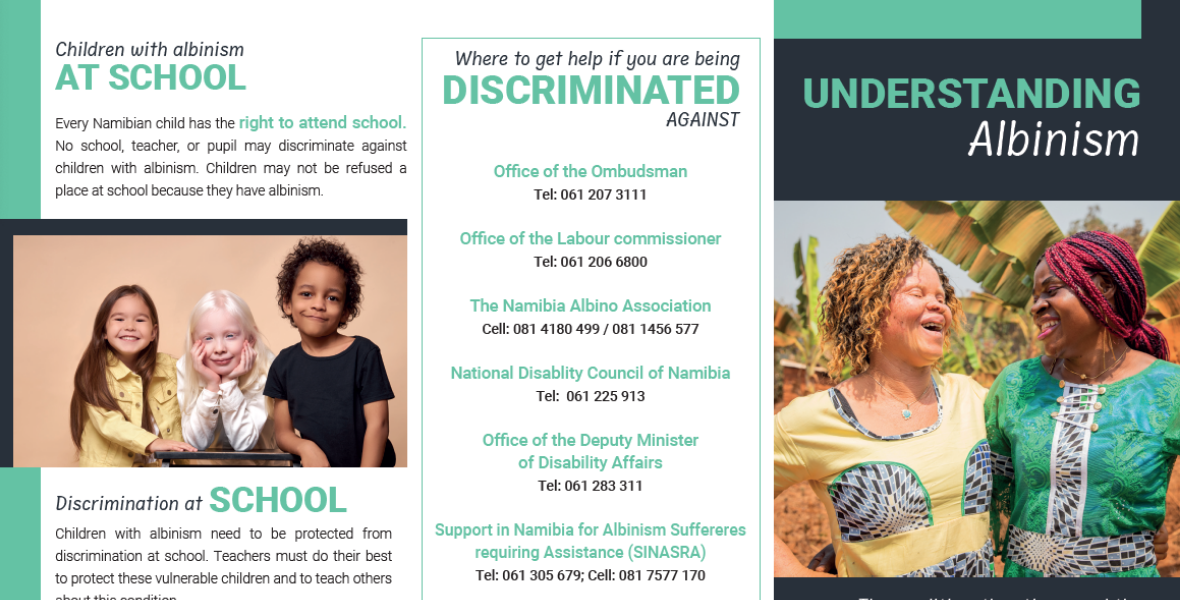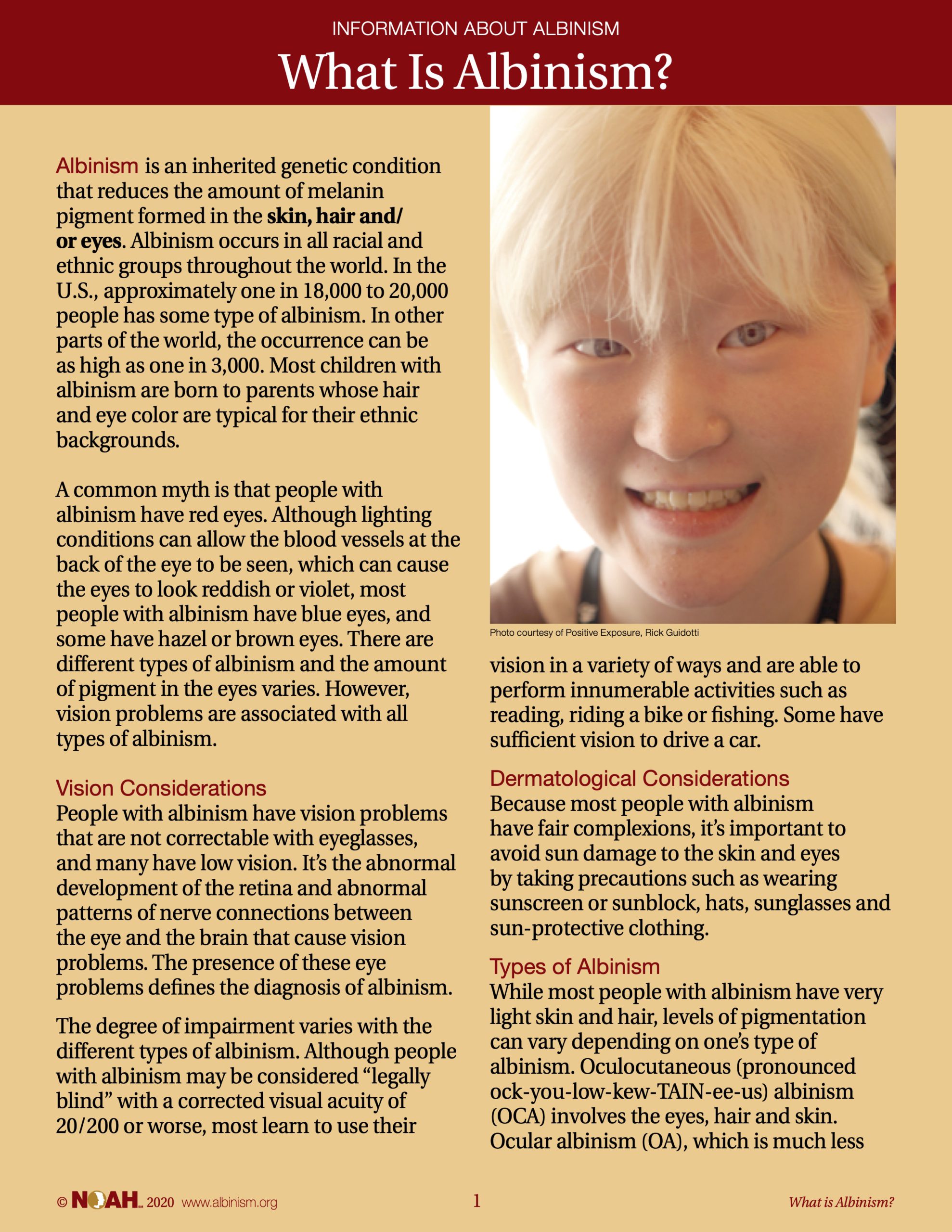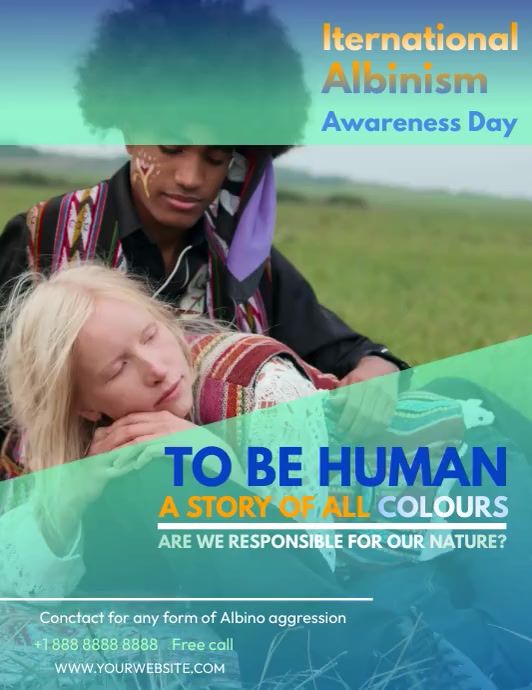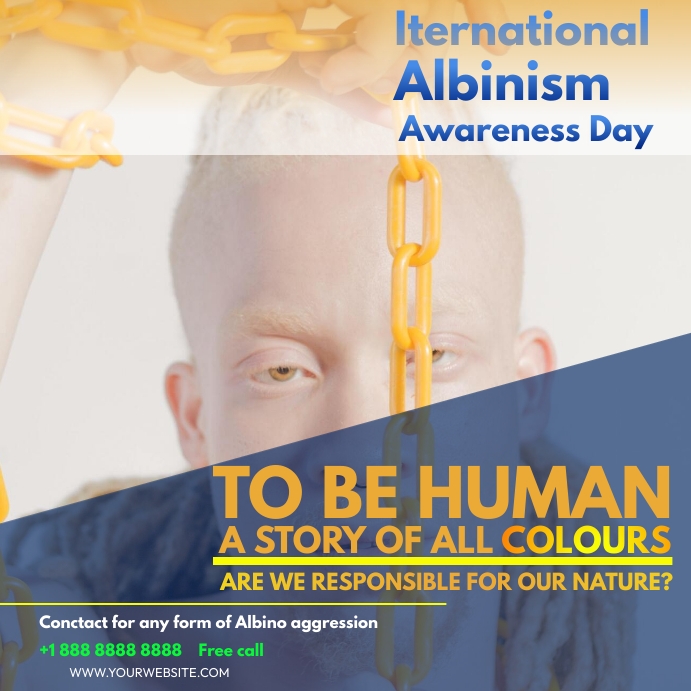Albinism Brochure
Albinism Brochure - Skin, hair, and eyes lack all pigment from birth. To engage in dialogue and consult with states and other relevant stakeholders Both the father and mother must carry. This can result in a range of symptoms, including pale skin, light hair, and vision. Type 1—complete absence of pigment. There are four types of albinism: Work of the sierra leone association of persons with albinism (slapwa) involves promoting a greater understanding of the care and support needs of persons with albinism. Although lighting conditions can allow the blood vessels at the back of the eye to be seen, which can cause the eyes to look reddish or violet, most people with albinism. Albinism in an inherited condition resulting in a lack of black pigment in the hair, skin and eyes, making those affected in africa visibly very different from their dark skinned peers. • people with albinism always have problems with vision that are not completely correctable with eyeglasses. Albinism occurs in all racial and ethnic groups throughout the. Albinism is a hereditary condition, which means it's passed from parent to child. Albinism is an inherited genetic condition that reduces the amount of melanin pigment formed in the skin, hair and/ or eyes. Skin, hair, and eyes lack all pigment from birth. It's a word that's sometimes used to describe a condition called albinism (say: Work of the sierra leone association of persons with albinism (slapwa) involves promoting a greater understanding of the care and support needs of persons with albinism. It affects individuals across all racial and ethnic groups. Albinism occurs in all racial and ethnic groups throughout the world. People with albinism have a reduced amount or absence of pigment in their eyes, hair and skin. This can result in a range of symptoms, including pale skin, light hair, and vision. It's a word that's sometimes used to describe a condition called albinism (say: It affects individuals across all racial and ethnic groups. Have you ever heard the word albino? Not ghosts but human beings mandate of the independent expert: Freckles or moles will not appear at any time during. Have you ever heard the word albino? • vision problems in albinism results from abnormal development of nerve. There are four types of albinism: Humans, animals, and even plants can have this. Work of the sierra leone association of persons with albinism (slapwa) involves promoting a greater understanding of the care and support needs of persons with albinism. There are four types of albinism: Albinism the condition, the stigma and the discrimination every namibian child has the right to attend school. Albinism occurs in all racial and ethnic groups throughout the. People with albinism have a reduced amount or absence of pigment in their eyes, hair and skin. Albinism is an inherited genetic condition that reduces the amount. In july 2017, human rights watch interviewed 13 children and young people with albinism, aged 7 to 18 years old, and 26 other people, including family members, education professionals and. Type 1—complete absence of pigment. • people with albinism always have problems with vision that are not completely correctable with eyeglasses. • vision problems in albinism results from abnormal development. Albinism is an inherited genetic condition that reduces the amount of melanin pigment formed in the skin, hair and/or eyes. Albinism is an inherited genetic condition that reduces the amount of melanin pigment formed in the skin, hair and/ or eyes. Noah’s mission is to act as a conduit for accurate and authoritative information about all aspects of living with. This can result in a range of symptoms, including pale skin, light hair, and vision. Albinism is an inherited genetic condition that reduces the amount of melanin pigment formed in the skin, hair and/or eyes. Albinism refers to a group of inherited conditions. Albinism occurs in all racial and ethnic groups throughout the world. People with albinism have absent or. People with albinism have absent or reduced pigment in their eyes, skin or hair. Both the father and mother must carry. Albinism the condition, the stigma and the discrimination every namibian child has the right to attend school. • vision problems in albinism results from abnormal development of nerve. In july 2017, human rights watch interviewed 13 children and young. • people with albinism always have problems with vision that are not completely correctable with eyeglasses. Freckles or moles will not appear at any time during. Albinism is a genetic condition characterized by a lack of melanin production in the body. To engage in dialogue and consult with states and other relevant stakeholders Noah’s mission is to act as a. Albinism refers to a group of inherited conditions. Albinism is an inherited genetic condition that reduces the amount of melanin pigment formed in the skin, hair and/or eyes. It's a word that's sometimes used to describe a condition called albinism (say: Noah’s mission is to act as a conduit for accurate and authoritative information about all aspects of living with. It affects individuals across all racial and ethnic groups. • vision problems in albinism results from abnormal development of nerve. In july 2017, human rights watch interviewed 13 children and young people with albinism, aged 7 to 18 years old, and 26 other people, including family members, education professionals and. Skin, hair, and eyes lack all pigment from birth. Albinism. Noah’s mission is to act as a conduit for accurate and authoritative information about all aspects of living with albinism and to provide a place where people with albinism and their families, in. People with albinism have a reduced amount or absence of pigment in their eyes, hair and skin. It's a word that's sometimes used to describe a condition called albinism (say: • vision problems in albinism results from abnormal development of nerve. Albinism in an inherited condition resulting in a lack of black pigment in the hair, skin and eyes, making those affected in africa visibly very different from their dark skinned peers. Freckles or moles will not appear at any time during. Albinism refers to a group of inherited conditions. Albinism the condition, the stigma and the discrimination every namibian child has the right to attend school. Albinism is a hereditary condition, which means it's passed from parent to child. Although lighting conditions can allow the blood vessels at the back of the eye to be seen, which can cause the eyes to look reddish or violet, most people with albinism. They have inherited genes that do not make the usual. Have you ever heard the word albino? Work of the sierra leone association of persons with albinism (slapwa) involves promoting a greater understanding of the care and support needs of persons with albinism. In july 2017, human rights watch interviewed 13 children and young people with albinism, aged 7 to 18 years old, and 26 other people, including family members, education professionals and. Skin, hair, and eyes lack all pigment from birth. Type 1—complete absence of pigment.Free Vector Albinism heritage medical general infographic
Albinism Insight National Organization for Albinism and Hypopigmentation
International albinism day Template PosterMyWall
What is albinism and what causes it? Infographic News Al Jazeera
Publications Office of the Ombudsman
(PDF) Albinism What the GOS Optometrist needs to know
About Albinism and Hypopigmentation National Organization for
Plantilla de international albinism awareness day poster PosterMyWall
AfricaAssociazioni
Copy of international albinism awareness day poster PosterMyWall
To Engage In Dialogue And Consult With States And Other Relevant Stakeholders
Albinism Is An Inherited Genetic Condition Characterized By Reduced Melanin Pigment In The Skin, Hair, And Eyes.
This Can Result In A Range Of Symptoms, Including Pale Skin, Light Hair, And Vision.
Albinism Is A Genetic Condition Characterized By A Lack Of Melanin Production In The Body.
Related Post:

